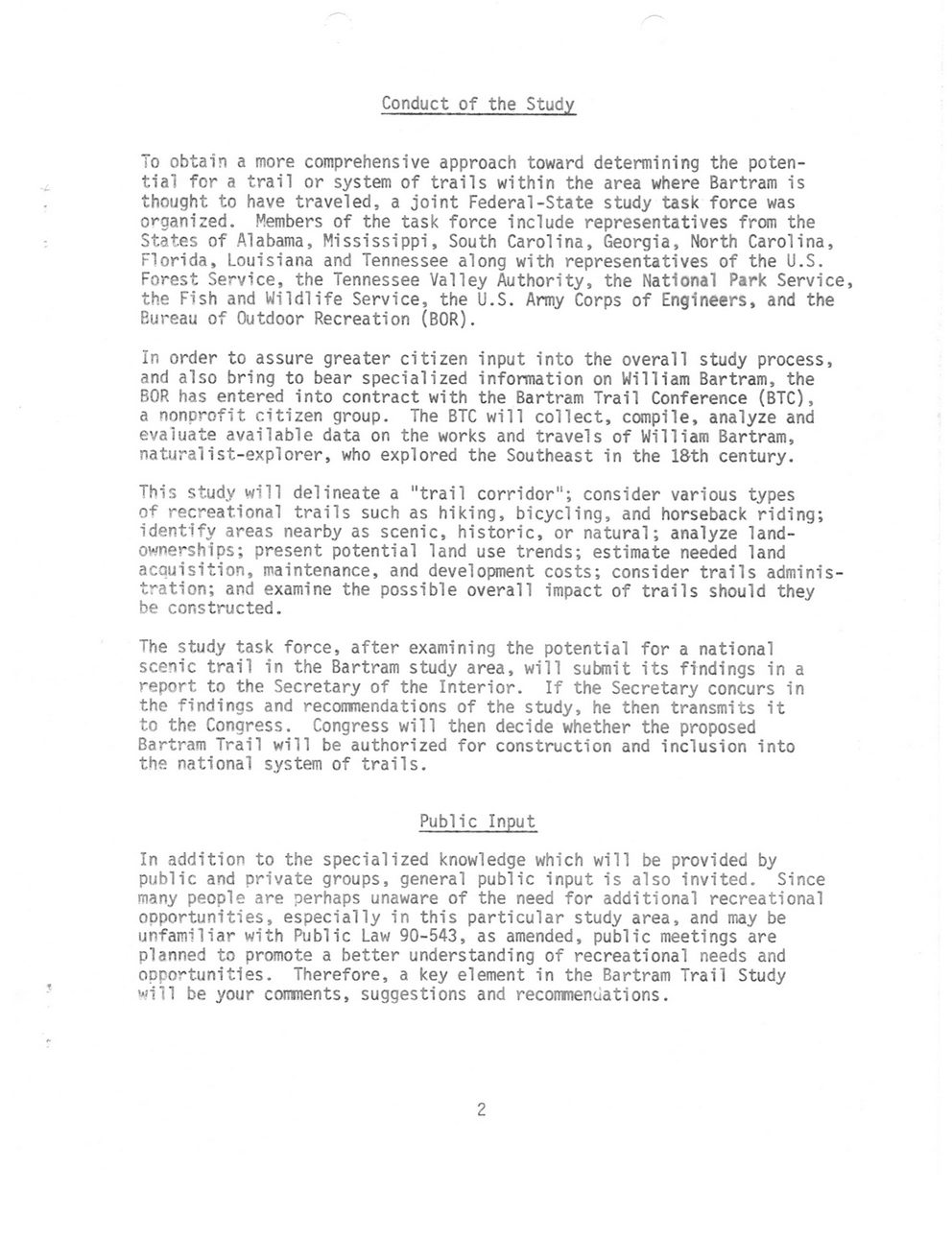This text was obtained via automated optical character recognition.
It has not been edited and may therefore contain several errors.
Conduct of the Study To obtain a more comprehensive approach toward determining the potential for a trail or system of trails within the area where Bartram is thought to have traveled, a joint Federal-State study task force was organized. Members of the task force include representatives from the States of Alabama, Mississippi, South Carolina, Georgia, North Carolina, Florida, Louisiana and Tennessee along with representatives of the U.S. Forest Service, the Tennessee Valley Authority, the National Park Service, the Fish and Wildlife Service, the U.S. Army Corps of Engineers, and the Eureau of Outdoor Recreation (BOR). In order to assure greater citizen input into the overall study process, and also bring to bear specialized information on William Bartram, the BOR has entered into contract with the Bartram Trail Conference (BTC), a nonprofit citizen group. The BTC will collect, compile, analyze and evaluate available data on the works and travels of William Bartram, naturalist-explorer, who explored the Southeast in the l&th century. This study will delineate a "trail corridor"; consider various types of recreational trails such as hiking, bicycling, and horseback riding; identify areas nearby as scenic, historic, or natural; analyze land-ownerships; present potential land use trends; estimate needed land acquisition, maintenance, and development costs; consider trails administration; and examine the possible overall impact of trails should they be constructed. The study task force, after examining the potential for a national scenic trail in the Bartram study area, will submit its findings in a report to the Secretary of the Interior. If the Secretary concurs in the findings and recommendations of the study, he then transmits it to the Congress. Congress will then decide whether the proposed Bartram Trail will be authorized for construction and inclusion into the national system of trails. Public Input In addition to the specialized knowledge which will be provided by public and private groups, general public input is also invited. Since many people are perhaps unaware of the need for additional recreational ODportunities, especially in this particular study area, and may be unfamiliar with Public Law 90-543, as amended, public meetings are planned to promote a better understanding of recreational needs and opportunities. Therefore, a key element in the Bartram Trail Study will be your comments, suggestions and recommenuations. 2

Bartram Trail-Study-Brochure-p.3